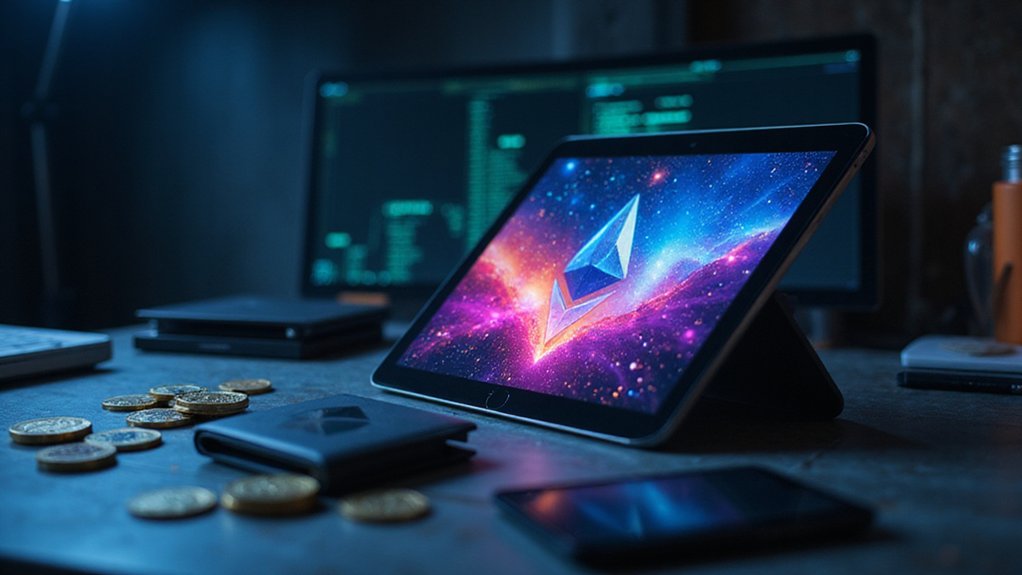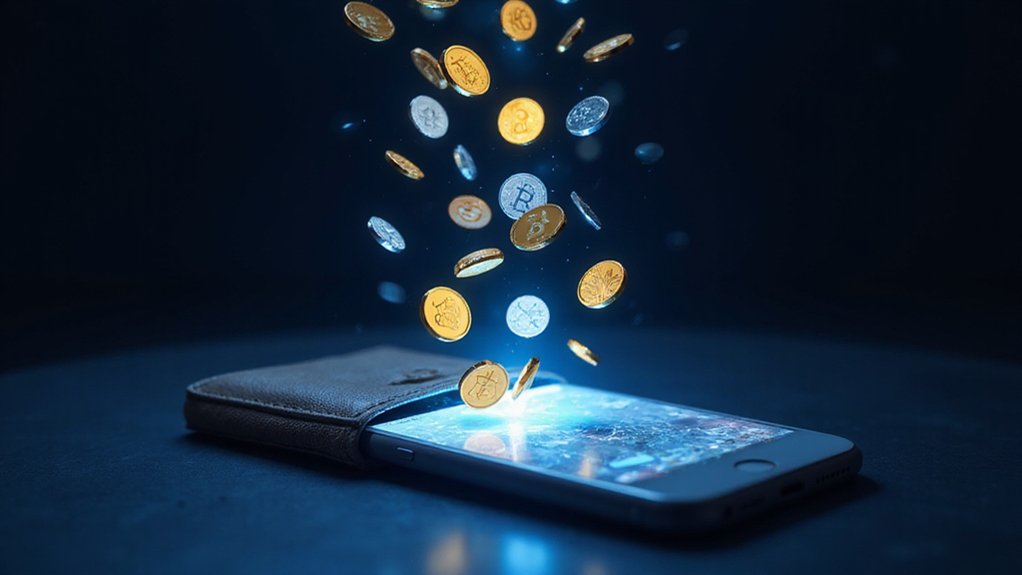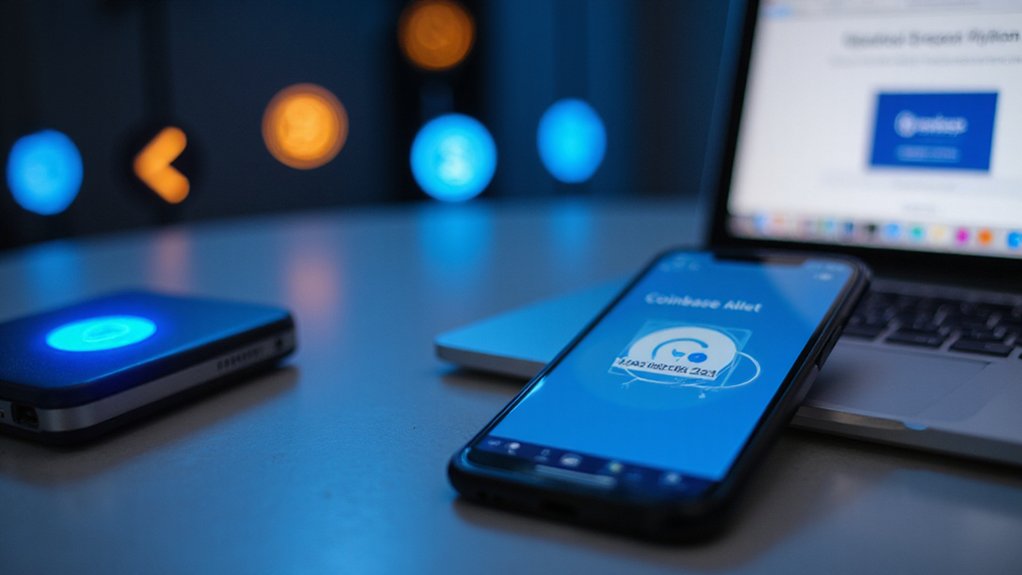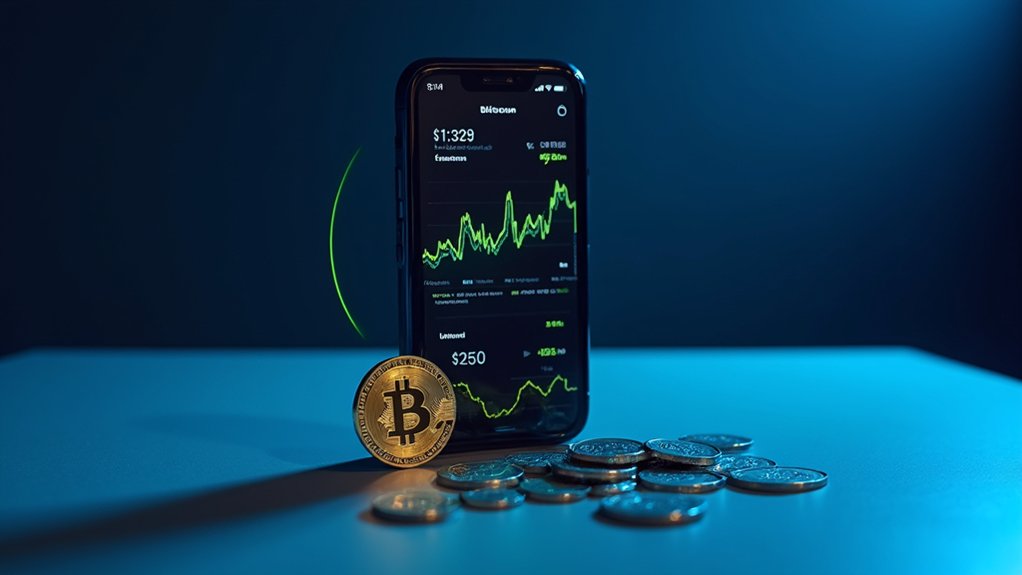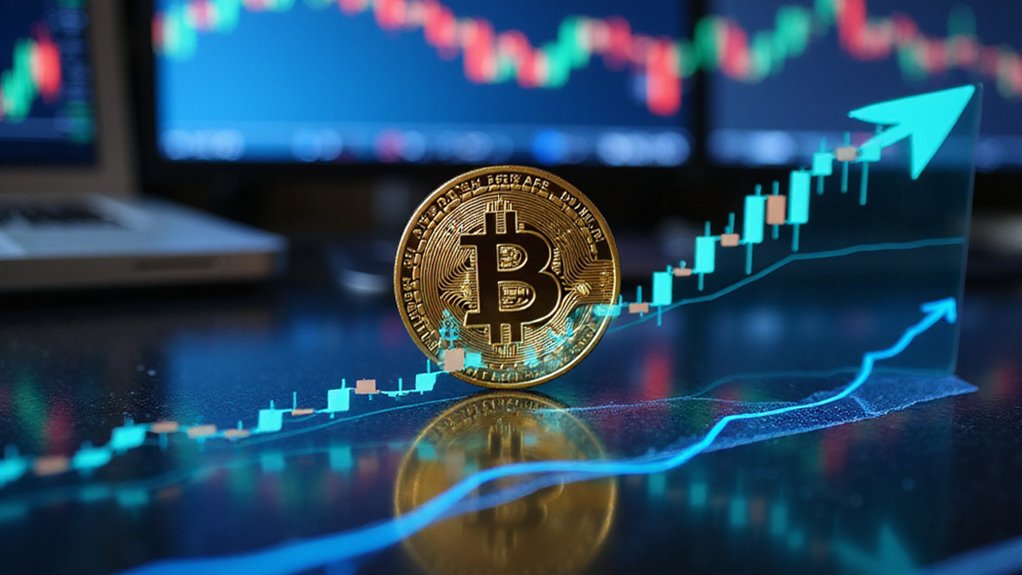Creating an NFT requires five essential steps: prepare your digital asset (maintaining high-resolution originals), select a blockchain (Ethereum remains dominant despite its fees), establish a crypto wallet (MetaMask stands as the industry standard), mint on a marketplace (OpenSea or Rarible offer no-code interfaces), and manage your creation post-launch (including pricing and promotion). While gas fees and technical requirements present modest barriers to entry, contemporary platforms have simplified what was once an impenetrable process for the average creative entrepreneur.

Why have tangible assets when you can own purely digital ones?
The peculiar alchemy of blockchain technology has transformed ephemeral digital files into certifiably scarce commodities—a transmutation process accessible to anyone with modest technical acumen and a tolerance for crypto-economic volatility.
The uninitiated creator must first prepare their digital asset, ensuring originality and proper formatting (JPEG, PNG, or MP4 being the standard formats), while maintaining a high-resolution original for posterity and authentication purposes. These NFTs serve as digital certificates proving exclusive ownership of the asset.
Selecting an appropriate blockchain represents the next critical junction.
While Ethereum remains the dominant ecosystem for NFT creation—supporting the ERC-721 and ERC-1155 standards that underpin most digital collectibles.
Alternatives like Polygon or BSC offer substantially reduced transaction costs, a consideration not to be dismissed lightly given Ethereum’s occasionally astronomical gas fees.
The environmentally conscious might gravitate toward proof-of-stake networks like Tezos, which consume a fraction of the energy required by their proof-of-work counterparts.
The creator must then establish a crypto wallet—MetaMask being the de facto standard—securing one’s seed phrase with paranoid diligence, as its compromise represents an irreversible catastrophe. MetaMask allows users to easily manage multiple networks simultaneously, making it versatile for creators working across different blockchains.
After funding said wallet with the blockchain’s native token, one proceeds to marketplace selection.
OpenSea and Rarible offer no-code interfaces that democratize the minting process, allowing creators to establish collection parameters and royalty percentages (typically 5-10% of secondary sales) without writing a single line of code. The minting process requires gas fees to publish your NFT onto the blockchain, making it officially part of your digital collection.
The actual minting involves uploading media, defining token parameters, and approving the requisite gas fee—a process mercifully simplified by contemporary marketplaces.
Post-creation management includes pricing configuration, promotional activities through appropriate social channels, and analytical monitoring.
The truly conscientious creator will maintain engagement with their collector community and perform regular security audits of their crypto infrastructure.
The barriers to entry have never been lower, yet success in this speculative domain remains elusive for most.
Such is the peculiar intersection of democratized creation and winner-take-all economics that defines the current NFT landscape.
Frequently Asked Questions
Are NFTS Environmentally Harmful Due to Energy Consumption?
NFTs have historically posed significant environmental concerns, particularly on Proof-of-Work blockchains where single transactions consumed electricity equivalent to weeks of EU residential usage.
However, Ethereum’s shift to Proof-of-Stake has dramatically reduced energy consumption by approximately 99.95%.
While NFTs once generated emissions comparable to millions of transatlantic flights annually, the environmental impact varies considerably now based on the underlying blockchain.
Mitigation strategies include Layer-2 solutions, carbon offsets, and eco-conscious platform selection.
What Are the Ongoing Costs After Minting an NFT?
After minting an NFT, creators face numerous ongoing costs: marketplace transaction fees (2.5-15%), royalty distribution gas fees, periodic transfer costs, and potential smart contract upgrades.
The financially prudent should anticipate platform-specific charges for premium features ($30-500 monthly) and promotional campaigns that can reach five figures.
Hidden expenses lurk in metadata updates, cross-chain conversions, and—perhaps most sobering—tax obligations requiring specialized accounting expertise that few enthusiasts initially budget for.
Can I Sell My NFT on Multiple Marketplaces Simultaneously?
While technically feasible, selling an NFT on multiple marketplaces simultaneously is fraught with potential pitfalls.
The practice—known colloquially as “cross-listing”—typically damages collector trust and diminishes perceived scarcity (that elusive quality NFTs purportedly offer).
Most experts recommend platform exclusivity to maintain value integrity, though the adventurous might experiment with different artworks across marketplaces instead.
Those determined to dual-list should prepare for multiplied gas fees and the inevitable headache of synchronizing transactions across disparate blockchain ecosystems.
How Do I Protect My NFT Art From Being Copied?
Artists seeking to protect their NFT art from unauthorized copying should employ a multi-layered approach: digital watermarking, copyright notices, and blockchain verification serve as technical safeguards, while registration with copyright offices provides legal recourse.
One must acknowledge, however, that perfect protection remains elusive (digital art being, after all, inherently replicable).
Regular monitoring of marketplaces, combined with swift action against infringers, completes this defensive arsenal—though vigilance remains an artist’s most reliable shield.
What Happens to My NFT if the Marketplace Platform Shuts Down?
When a marketplace platform shuts down, NFTs remain secure on the blockchain—their actual ownership persists independently of any front-end interface.
The digital asset continues to exist in the owner’s wallet, accessible through alternative marketplaces (assuming compatibility with common standards like ERC-721).
While the platform’s demise may impact liquidity and valuation, prudent collectors can simply transfer their assets elsewhere, though they should remain vigilant about metadata preservation, particularly if hosted on centralized servers rather than IPFS.
